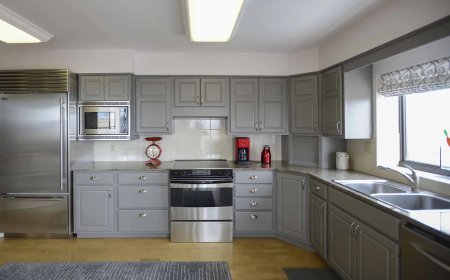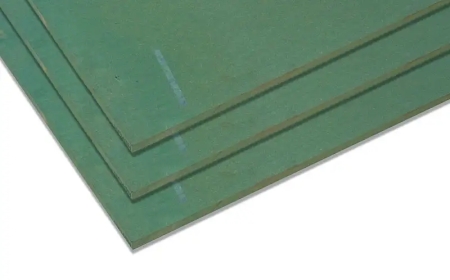Expert Packing Tips to Make Your Move a Breeze: A Step-by-Step Guide
Moving to a new house is an exciting milestone, but let’s face it: it can also be incredibly stressful. Between managing logistics, securing new services

Moving to a new house is an exciting milestone, but lets face it: it can also be incredibly stressful. Between managing logistics, securing new services, and coordinating the big day, packing often feels like the most overwhelming part of the process. However, did you know that good packing can actually reduce a huge amount of stress during your move? Yes, its true! With the right strategies and a little planning, packing can be a breeze. Rent high-quality Hire Moving boxes Sydney in Sydney from Hire Moving Boxes for a professional-grade packing solution.
In this ultimate guide, well walk you through each phase of packing, offering expert tips to make your move organized, efficient, and as stress-free as possible. So, grab a cup of coffee, take a deep breath, and lets get started on making your move a smooth one.
Phase 1: Pre-Packing Preparation (Weeks Before the Move)
1. Declutter Ruthlessly
Before you even think about packing up your belongings, its time to declutter. Moving is the perfect opportunity to take stock of your possessions and decide whats worth keeping. Remember, the less you have to pack, the less youll have to unpackand the less stress youll experience along the way.
Why Decluttering is Crucial:
Moving is a great time to assess what you truly need. Ask yourself: "When was the last time I used this?" or "Does this item bring me joy?" Inspired by the KonMari method, if something doesnt serve a purpose, get rid of it.
How to Decide What to Keep:
-
The One-Year Rule: If you havent used it in the last year, its probably time to part with it.
-
Keep, Donate, Sell, or Discard: Sort your items into these categories. Donate items that are gently used but no longer needed, sell valuable items, and discard broken or unusable items.
-
Organizing by Category: Focus on one category at a time (clothes, books, kitchenware, etc.) to make the process more manageable.Plastic moving boxes Sydney are ideal for protecting fragile items. Explore the options available at Crates2U.
Decluttering doesnt just make your move easier; its an opportunity for a fresh start in your new home.
2. Gather Quality Packing Supplies
The right packing materials are essential for ensuring your belongings arrive at your new home safely. The last thing you want is for fragile items to break due to flimsy boxes or poorly packed containers.
Essential Packing Supplies:
-
Various-sized boxes (small for heavy items, large for lighter items)
-
Packing tape (strong and durable)
-
Bubble wrap and packing paper (for cushioning)
-
Markers (for labeling boxes)
-
Box cutter (for easy box opening)
-
Plastic bags (for small items)
You can purchase packing supplies from your local moving company or stores, but you can also check online marketplaces for used boxes, which can save you some money. Just ensure that theyre in good condition and free from moisture.
3. Create a Moving Binder/Digital Folder
Staying organized is crucial throughout the moving process. Create a binder or digital folder to keep track of important documents, checklists, and receipts. This will be your go-to resource for everything related to your move, including:
-
Your moving company details
-
A checklist of tasks to complete before the move
-
Inventory of items
-
Receipts for any moving-related expenses
This binder will help you stay on top of things and ensure nothing important gets lost in the shuffle. If you're planning a big move in Sydney, consider the plastic moving boxes hire Sydney offered by Koala Box for a secure and eco-friendly option.
4. Plan Your Packing Timeline
Packing may seem daunting, but if you break it down into smaller tasks, its much more manageable. Aim to start at least a few weeks before the move, and plan out when to pack each room. Heres a simple breakdown:
-
2-3 weeks before the move: Start with rooms you dont use often (e.g., storage rooms, guest bedrooms).
-
1-2 weeks before the move: Begin packing less frequently used items in the kitchen, living room, and bedrooms.
-
Last week: Pack up the essentials, leaving only the items you need for the final few days.
Creating a packing timeline will keep you organized and prevent you from scrambling to pack everything last minute.
Phase 2: Smart Packing Strategies & Techniques
1. Pack Room by Room
Packing room by room is one of the most effective ways to stay organized during the move. By tackling one area at a time, you prevent chaos and avoid mixing up items that belong in different rooms.
Benefits of Packing Room by Room:
-
Youll be able to track which items are packed and which still need to be done.
-
Its easier to label your boxes correctly when you know exactly what room they belong to.
- Dont let your move become chaoticuse plastic moving boxes
2. Label Everything Clearly
Labeling boxes properly is essential. Not only will it make unpacking easier, but it will help your movers know where to place each box in your new home.
What to Include on Labels:
-
The room the box belongs to
-
A list of the contents
-
Fragile items marked clearly
Tip: Color-code your labels to help visually differentiate rooms (e.g., blue for the kitchen, green for bedrooms). This simple trick can save you hours when unpacking.
3. Create an Inventory List
Creating an inventory list is especially helpful for valuable items or long-distance moves. Take a moment to list out any high-value or fragile items and their condition before the move. This will help if anything goes missing or gets damaged during the move.
You can also take photos of expensive electronics, artwork, or antiques to have a record of their condition before the move.
4. The "Essentials Box" / "First Night Box"
One of the smartest things you can do during your move is to create an essentials box or first night box. This is a box of items you will need immediately upon arrival in your new home.
What to Include:
-
Toiletries (toothbrush, soap, shampoo)
-
Basic tools (scissors, screwdrivers, tape)
-
Chargers for phones and electronics
-
Snacks and drinks
-
Medications or medical supplies
-
Important documents (ID, medical records, etc.)
-
A change of clothes for each family member
Having these essentials on hand will save you from hunting through boxes for your toothbrush or struggling to find the TV remote after a long day of unpacking.
5. Weight Distribution
When packing, its important to consider the weight of the items in each box. Heavy items should go in smaller boxes, while lighter items can be packed into larger boxes. This not only prevents the boxes from getting too heavy to carry, but it also protects delicate items from getting crushed.
6. Protect Fragile Items
Fragile items like dishes, glassware, and artwork need extra attention during packing. Heres how to ensure they arrive at your new home in one piece:
-
Dishes and Glassware: Wrap each item individually with bubble wrap or packing paper. Place them vertically in the box for better protection.
-
Artwork: Use custom-sized boxes or picture boxes. If you dont have them, wrap paintings and frames in blankets or towels.
-
Plates and Bowls: Use cell dividers inside the box to create a barrier between each plate.
7. Packing Clothes
When it comes to packing clothes, you have a few options:
-
Wardrobe Boxes: These are perfect for hanging clothes like dresses, suits, and jackets.
-
Suitcases and Duffel Bags: Use your own suitcases for packing clothes youll need right away or want to keep wrinkle-free.
-
Vacuum Bags: For bulky items like comforters and winter coats, vacuum-sealed bags save space and reduce the number of boxes you need.
8. Electronics: Take Photos of Setups
Electronics can be tricky to pack. To avoid confusion when setting them up in your new home, take a photo of how everything is connected. If possible, pack electronics in their original boxes for the best protection. Dont forget to label cords and accessories.
9. Books & Heavy Items
When packing books, always use smaller, sturdy boxes. Books are heavy, and larger boxes could break or be too cumbersome to carry. Stack books upright like theyre on a bookshelf to save space.
10. Liquids: Secure Lids
If youre packing liquids (cleaning supplies, toiletries, etc.), always secure the lids and place the containers in plastic bags to avoid spills.
11. Utilize Linens and Towels
Use towels, sheets, and linens to protect fragile items. Not only does this save space, but it also provides extra cushioning for items like glassware, vases, or lamps.
Phase 3: Things to Keep in Mind / Common Mistakes to Avoid
1. Dont Pack Important Documents or Valuables in the Moving Truck
Your personal documents and valuables (e.g., jewelry, passports, cash) should always travel with you. Keep them in a secure bag or folder, separate from your other belongings.
2. Dont Pack Hazardous Materials
Some items like paint, flammable liquids, and cleaning supplies may be hazardous to transport. Check with your movers to find out what can and cant be packed.
3. Dont Wait Until the Last Minute
Starting early is key to a stress-free move. Dont wait until the last minute to pack everything. Begin the process early and pace yourself to avoid the last-minute chaos.
4. Communicate with Your Movers
If you have any special requests or concerns, communicate them with your movers well in advance. Whether its fragile items or heavy furniture, make sure theyre aware of anything that requires special attention.


































